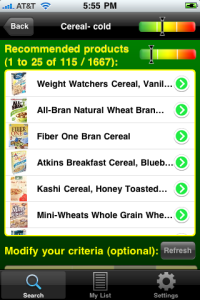Did you know that eating one meal away from home can increase your daily intake by an average of 134 calories? Holding everything else consistent (e.g., activity level), that means you can gain approximately 2 pounds per year if you eat out only once per week. In February 2010, the USDA’s Economic Research Service (ERS) released a report, The Impact of Food Away From Home on Adult Diet Quality, which presents findings from an analysis of data derived from two studies – the 1994-1996 Continuing Survey of Food Intakes by Individuals (CSFII) and the 2003-2004 National Health and Nutrition Examination Survey (NHANES). This investigation looked at the affects of dining out on caloric intake, overall diet quality, and quality of meal choices for breakfast, lunch, dinner, and snacks.
What were the results?
- Daily caloric intake increases by approximately 134 calories on the days one meal is eaten away from home.
- Eating one meal away from home per week can result in an average weight gain of 2 pounds per year.
- Dining out for one meal lowers the quality of your diet – shifting the average adult diet from a classification of “fair” to “poor.”
- The number of servings of fruit per 1,000 calories decreases by as much as 22.3% when one meal is eaten away from home.
- The intake of dark green and orange vegetables is reduced by approximately 31.4% when dining away from home.
- The consumption of whole grains is decreased by an estimated 26.8% when a restaurant meal is chosen.
- Dining out results in an increase of sodium, added sugars, solid fat, saturated fat, and alcohol by 1.9-9.3%.
- Affects of diet quality vary based on which meal is eaten away from home. Dining out for breakfast results in a decrease in intake of whole grains and dairy per 1,000 calories consumed and an increase in the consumption of added sugars, alcohol, solid fat and saturated fat that day. Eating out at dinner results in a decrease of vegetables consumed per 1,000 calories. Lunch-time meals away from home result account for the biggest drop of fruit intake per 1,000 calories (22.3%).
- Dieters appear to have a greater difficulty choosing healthy items when away from home compared to nondieters as evidenced by a greater increase in intake of saturated fat for breakfast and lunch meals eaten away from home and a greater consumption of added sugars, salt, alcohol, solid fat and saturated fat when snacks and breakfast are dined out.
- Negative effects on diet quality have decreased between the study periods of 1994-1996 and 2003-2004. Improvements were noted for whole grain consumption at breakfast and saturated fat when snacking away from home.
Recent increases in public awareness, changes made by restaurants to offer healthier options, and new federal mandates that nutrition information be provided to patrons of restaurants can contribute to continual improvement of diet quality when dining out.
How do you try to eat healthy while dining out? Share with us, we want to know!
Source:
Todd, Jessica E., Lisa Mancino, and Biing-Hwan Lin. The Impact of Food Away From Home on Adult Diet Quality, ERR-90, U.S. Department of Agriculture, Economic Research Service, February 2010.













